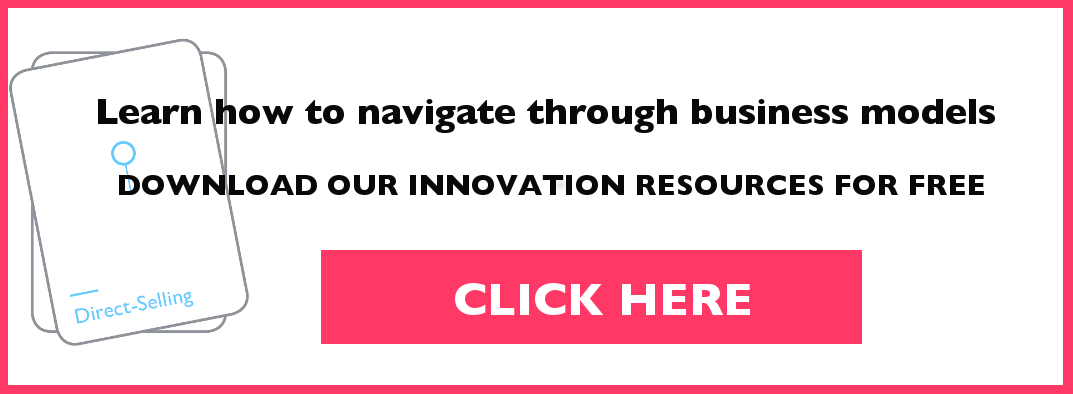How to identify your assumptions?
Over the past 5 years, the BMI Lab has supported many large companies in innovation workshops, BMI sprints and advisory projects. A vital step after discovering a new business opportunity and creating a business model concept, is to identify the most critical assumptions of the concept. The reason behind this is, that before you have established a clear understanding of your underlying assumptions, the testing and prototyping phase of an idea becomes redundant.
During our projects, we have experienced that identifying assumptions is often found difficult and “unnatural” for our clients. To help you with this process, we have developed the “Assumptions Juice Press”. This tool will help you to identify the riskiest assumptions per dimension of your business model concept and, subsequently through testing, validate or refute them. First, let’s have a look at some general tips.
A good business hypothesis is:
Clear: Make it simple and concrete what you believe. If your teammates have a different understanding about an assumption, find the common denominator. If you still have different opinions about the way to formulate your assumption or the level of ambiguity of it, don’t half-heartedly choose a description that isn’t explicit enough. Instead split your assumption into two or more assumptions that fits to each different opinion to make it clear and, therefore, more easily testable.
Structured: A best practice is to always use the same structure when phrasing an assumption. It’s recommended to start with “I believe that…” or if it’s a team “We believe that…” or “I/we assume that…”. The second element should be the business model dimension (e.g. customer need) followed by what you assume to be true for this dimension.
Refutable: Don’t make your hypotheses too soft. Refutable means that your statement has to be testable with a high likelihood of being wrong. Being able to invalidate some of your business hypotheses is very good, since this will result in a steeper learning curve.
An assumption that is written in a clear, structured and refutable way is what we would call a business hypothesis.
How to identify the riskiest assumptions of any business?
The biggest risk is customer acceptance
Any business is different, consequently any business has different risk profiles. In other words, a business that relies on a radical new technology (Blockchain, AI, Additive Manufacturing etc.) bears different risks than an idea that is based on established technology (E-commerce, Mobile Apps, SaaS etc.).
The biggest risks can be found in the acceptance of the customer and not from technology itself. A good example is PayPal. At the time when the company was founded by Peter Thiel, Luke Nosek and Max Levchin under the name Confinity, the lack of initial success was not due to technology. The then startup almost went bankrupt in the late 90s because there was no customer need for the mobile payment solutions that they initially developed for devices such as the Palm Pilot.
Generally speaking, when you develop a new business model, the biggest risk typically has to do with not understanding and, thus, not meeting your customer’s needs. Or failing to comprehensively make the customer understand the value of your solution.
In 90 percent of the cases, the riskiest assumptions as part of a business model are the following seven:
Need assumptions.
What is the customer’s need? Why does the customer want it? What are current solutions that satisfy similar needs? What is the “job” the customer wants to accomplish and needs help accomplishing?Problem assumptions.
What are problems with current solutions? How happy or unhappy is the customer today? Why is she/he unhappy? Are current solutions too complicated, expensive, hard to find etc.?Customer-type assumptions.
Do you have the right customer in mind? How would the “perfect” customer look like? Can you describe your customers’ profiles (their persona)? If it’s a business, can you name a company that would be your perfect customer? If it’s an end-user, can you name a friend, who would buy from you? Bear in mind that sometimes you’ll have different types of customers (e.g. on multi-sided platforms) or have to deal with complex decision-making units.Value proposition assumptions.
What would be the most compelling value proposition? What makes your value proposition unique? What would make it stick? Why does your value proposition excite your customer?Offering assumptions.
What does the offering need to include? Which products and services do you (or your business partners) need to offer to excite your customer? What would be their key-features?Revenue model assumptions.
What would the best revenue model for your solution be? How would your customer prefer to pay for (pay per use, pay per hour, sell a product, subscription etc.)? How can your revenue model create a lock-I or reinforcing loops and virtuous cycles?Willingness to pay assumptions.
How much is your customer willing to pay for your solution? What are typical price points? How would your price sensitivity curve look like? How could you use anchor-pricing to increase your price? What would be your average price?
That’s it
These are the riskiest assumptions of virtually any new business model concept. If you are creating a new business model, you should set to identifying and testing them as soon as possible. Learning which assumptions are wrong is as important as proving their accuracy. Thus, it’s important to make your assumptions clear, structured, and refutable.
The Assumptions Juice Press worksheet can help you to develop better hypotheses. You can find it in our resources section.



